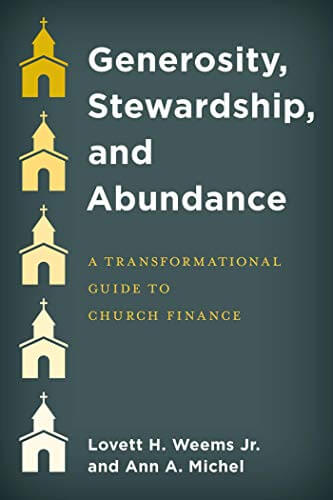Three years ago, our church set an ambitious goal — to become a “tithing congregation” that gives ten percent of our church’s budget to outreach, benevolences, and mission benefiting those beyond our congregation. Over five years, we are increasing our outreach spending — only one percent of our budget when we began — to ten percent. This ten percent would be over and above already significant giving through denominational apportionments and special fundraising for a mission in Guatemala.
This has turned out to be one of the best decisions we ever made. We are gaining a reputation in our community as a church that cares and invests in the lives of the broken. The church is excited and vital. We are living out one of our core beliefs — that we can change the world. And, in three years, our giving is up almost 50 percent!
It is not about convenience; it is about priority. We said we cared about the least; our budget said we cared about ourselves.
I must confess, this was not my idea. In fact, when it was first proposed, a million excuses ran through my head — the need to staff our growing youth ministry, our desire to pay down a ministry-smothering building debt that was consuming 27 percent of operating expenses, the capital required to replace the sanctuary air conditioner. But as I sorted through these objections, they rang hollow.
Outreach is a passion at our church. Members serve weekly at our crisis center. They rebuild homes and fill backpacks for needy school kids. They support an orphanage and school in Guatemala and provide housing to the homeless on our campus. Our people care about those outside our walls. Our budget did not. So, we started down the path toward becoming a tithing congregation, learning some key lessons along the way.
Start now. That first year, we took a big leap of faith. We said out loud that in five years we wanted to be giving away ten percent of what we took in. Then we took the first step, approving a budget with three percent going to outreach. It was not convenient to give away money sorely needed for internal needs. But it is not about convenience; it is about priority. We said we cared about the least; our budget said we cared about ourselves. You cannot wait for the perfect time because you will never feel you have enough money. Begin now.
Take it slowly. It turned out to be a blessing that we made this a five-year goal. It has allowed us to establish giving priorities that reflect our church’s passions and calling. Taking it slowly is helping outreach grow organically rather than just spending money relatively indiscriminately.
Talk about it. From the moment we decided to give more to outreach, we have talked about it. Our bulletin now has a section that celebrates how lives are being changed through service and outreach. If I receive a note of thanks or if the church has responded to a need, I take time just before the offering to lift it up. Each Sunday in Advent, we give a check to a worthy group — from campus ministry to children in the path of a tornado to our local crisis ministry. We invite these groups to come to worship to receive our gift so we can celebrate the good they do. Instead of asking for money at Christmas, we model a spirit of generosity. People who visit immediately sense our passion for service.
We prayerfully debated whether our congregational tithe should include our denominational apportionments, the value of facilities and staff time offered to good causes, and an annual fundraiser that raises $40,000 for a Guatemala orphanage. We eventually decided to err on the side of being overly generous and work toward ten percent of our total dollar budget, so we can truly say that ten percent of the amount of money we receive is used in ministry to our community.
One totally unanticipated result of giving more to outreach is that we now ask for money less often. We have gone from about 20 fundraisers a year to three. Now if the children would like to make meals for low-income families, or the youth are going to rebuild homes, they don’t have to spend time raising the money; they can focus all their efforts on the work. When disaster strikes, we don’t have to take up an offering to respond. Now we use those Sundays to share how regular giving has already allowed us to respond.
Looking back, we see that this decision has not only helped us be faithful to God’s call that we care for others; it has proven to be one of the best stewardship strategies we have ever adopted. If you want to create a culture of generosity among church members, model generosity as a church.







